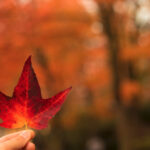Selecting Outdoor Plants for Your Landscape

Photo credit: Max Rahubovskiy
Creating a stunning and sustainable landscape involves selecting the right plants that thrive in your specific region’s climate and conditions. Different regions offer a diverse array of ecosystems, soil types, and weather patterns, which means that not all plants will flourish in every area. Our outdoor plants guide will walk you through the process of choosing the best plants for your landscape based on your region, ensuring a vibrant and harmonious garden that is both visually appealing and easy to maintain.

Flowers
Unveil the horticultural wonders of your area with our comprehensive guides to the best garden flowers by region. From the delicate lilies gracing the Pacific Northwest to the resplendent magnolias adorning the Southeast, these guides will turn your gardening experience into a blooming success.

Trees
Learn how to craft the perfect arboreal tapestry. These helpful guides cover everything you need to know about the best trees for landscaping by region. From the stately oaks that thrive in the Midwest to the iconic cacti that define Southwestern vistas, our curated lists will give you the information you need to transform your outdoor space.
Choosing the Best Plants Based on Your Region
Understanding Your Region
Before selecting any plants, it’s crucial to understand the climate and growing conditions of your region. Factors such as temperature, rainfall, humidity, and soil type play a vital role in determining which plants are best suited to thrive in your area.
Native Plants: Your Best Allies
Native plants are the backbone of a successful landscape. They have evolved and adapted to the local climate and soil conditions, making them naturally resilient and low-maintenance. Native plants also provide critical support to the local ecosystem, attracting native wildlife and beneficial insects, promoting biodiversity, and reducing the risk of invasive species.
Take the time to research and identify native plant species in your area, as they will not only be easier to grow but also add a unique charm to your landscape.
Consider Microclimates
Regions can have various microclimates, small pockets with distinct environmental conditions. Factors like sun exposure, wind patterns, and even nearby buildings can create microclimates within your garden. Choose plants that are best suited for each specific area.
Drought-Tolerant Plants for Arid Regions
In arid regions or areas prone to drought, water conservation is of utmost importance. Opt for plants that are well-adapted to low water availability, such as succulents, cacti, and certain grasses. Native drought-tolerant species are especially advantageous, as they can endure prolonged dry spells without compromising their beauty.
Cold-Hardy Plants for Chilly Climates
In regions with cold winters and frost, selecting cold-hardy plants is essential to avoid plant damage and ensure year-round attractiveness. Look for species that can withstand freezing temperatures and harsh conditions, such as evergreens, conifers, and winter-flowering shrubs.
Heat-Loving Plants for Tropical and Subtropical Regions
Tropical and subtropical regions offer their own set of challenges, such as intense heat and humidity. Embrace the lushness of these regions by incorporating heat-loving plants like palms, ferns, and tropical flowers. Consider shading techniques and proper mulching to protect sensitive plants during extreme heat.
Adaptability to Seasonal Changes
Some regions experience dramatic seasonal shifts, which can influence your plant selection. Choose plants that can adapt to these changes and add visual interest throughout the year. Consider the use of deciduous trees and shrubs, which shed their leaves in winter, and evergreen plants that provide consistent color and texture throughout the seasons.
By understanding your region’s climate, considering native plants, identifying microclimates, and accounting for specific environmental factors, you can create a beautiful and sustainable landscape that brings joy and tranquility to your outdoor space throughout the year.
Other Considerations When Picking Outdoor Plants
When choosing outdoor plants for your home’s landscape, several other factors should be taken into consideration to ensure the success and beauty of your garden. These factors include the following.
Sunlight exposure
Observe the level of sunlight different areas of your landscape receive throughout the day. Some plants flourish in full sun, while some thrive in full or partial shade. Select plants that match the sunlight conditions of each specific area in your garden.
Soil type and pH
Different plants have varying soil preferences. Some plants need well-draining soil, while some prosper in sandy or moist soil. Additionally, the soil’s pH level can influence a plant’s ability to absorb nutrients. Test your soil’s pH and choose plants that are compatible with the results or amend the soil accordingly.
Space and size
Consider the available space in your landscape and the mature size of the plants you select. Avoid overcrowding by choosing plants that fit well within their designated areas and won’t outgrow the space over time.
Watering needs
Some plants require regular watering, while others are more drought-tolerant. Assess your ability to maintain a consistent watering schedule and select plants that match your lifestyle and the water availability in your area. Also, ensure that your landscape drainage is optimal.
Maintenance requirements
Different plants demand various levels of maintenance, including pruning, deadheading, fertilizing, and pest control. Be realistic about the time and effort you can dedicate to garden upkeep and choose plants that align with your maintenance capacity.
Wildlife attraction
Consider how your plant choices can support local wildlife. Certain plants attract birds, butterflies, and beneficial insects, enhancing the biodiversity of your garden and contributing to the overall ecosystem health.
Allergies and safety
Be mindful of any potential allergens present in certain plants, especially if you or your family members have allergies. Additionally, some plants may be toxic if ingested by pets or young children, so research the safety of your chosen plants.
Aesthetics and design
Your landscape should reflect your personal preferences and desired style. Choose plants that complement each other in terms of color, texture, and form to create a cohesive and visually appealing design.
Invasive species
Avoid planting invasive species that can negatively impact the local ecosystem and outcompete native plants. Familiarize yourself with invasive plants in your area and refrain from introducing them to your landscape.
Local regulations
Check for any local ordinances or homeowner association rules that may dictate what types of plants you can have in your landscape. Some areas have restrictions on certain plants to preserve the environment or maintain a uniform aesthetic.
By considering these additional factors, you can make well-informed decisions when choosing outdoor plants for your home’s landscape, leading to a beautiful, sustainable, and enjoyable garden space. View more home landscaping guides from Dwell Adore for additional insights.
Home Gadgets & Appliances
- Choosing a Refrigerator: Door Layouts & Sizes

- Dishwasher Types: Benefits, Drawbacks & Considerations

- Washing Machine Guide: Which Is Best for You?

- Ultimate Guide to Blenders

Health & Wellness
- Resistant Starch Benefits, Foods & Types

- Types of Meditation: Finding Inner Peace & Clarity

- Quotes About Change & Life Transitions

- How to Stop Drinking Soda When You’re Addicted





